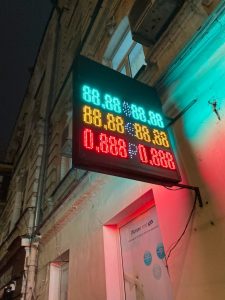Forex trading is an exciting and dynamic market where traders seek to profit from the movements in currency exchange rates. One of the most important skills a trader can possess is the ability to identify trends and determine if they will continue or not. This can be a challenging task, but with the right tools and knowledge, a trader can become proficient in identifying market trends and making profitable trades. In this article, we will explore some of the key indicators and techniques to help traders identify if a trend will continue in forex trading.
Understanding the concept of trends in Forex Trading
Trends are a critical aspect of forex trading. Simply put, a trend is the direction in which an asset’s price is moving. There are three types of trends: uptrend, downtrend, and sideways trend. An uptrend is characterized by a series of higher highs and higher lows, while a downtrend is characterized by a series of lower lows and lower highs. A sideways trend, also known as a range, is characterized by a horizontal price movement within a specific price range.
To identify trends, traders use technical analysis tools such as charts, indicators, and trend lines. These tools help traders visualize and analyze price movements, which can help them identify potential trends and make informed trading decisions.
Identifying trends in forex trading can be straightforward, but it’s important to remember that no trend lasts forever. Trends can last for days, weeks, months, or even years, but they always come to an end eventually. Therefore, it’s crucial to understand when a trend is likely to continue and when it’s likely to reverse.
Key Indicators to Identify Trend Continuation
1. Moving Averages
Moving averages are a popular technical indicator used to identify trends in forex trading. A moving average is calculated by taking the average price of an asset over a specific period. Traders use moving averages to smooth out price fluctuations and identify the direction of the trend. If the price of an asset is above the moving average, it’s considered an uptrend, while if the price is below the moving average, it’s considered a downtrend.
Traders often use two or more moving averages to identify trend direction and momentum. For example, a trader may use a 50-day moving average and a 200-day moving average. If the 50-day moving average is above the 200-day moving average, it’s considered a bullish signal, while if the 50-day moving average is below the 200-day moving average, it’s considered a bearish signal.
2. Relative Strength Index (RSI)
The Relative Strength Index (RSI) is a momentum indicator used to identify overbought or oversold conditions in the market. Traders use the RSI to identify trend direction and momentum. The RSI measures the strength of a trend by comparing the average gains and losses over a specific period. If the RSI is above 70, it’s considered overbought, while if it’s below 30, it’s considered oversold.
Traders use the RSI to identify potential trend reversals. For example, if the RSI is above 70, it indicates that the asset is overbought and may be due for a pullback. Conversely, if the RSI is below 30, it indicates that the asset is oversold and may be due for a rebound.
3. Moving Average Convergence Divergence (MACD)
The Moving Average Convergence Divergence (MACD) is a popular trend-following indicator used to identify potential trend reversals. The MACD measures the difference between two exponential moving averages and plots a histogram that oscillates above and below a zero line. Traders use the MACD to identify trend direction and momentum.
If the MACD line is above the signal line, it’s considered a bullish signal, while if the MACD line is below the signal line, it’s considered a bearish signal. Traders also look for divergences between the MACD and the price of an asset, which can indicate a potential trend reversal.
4. Trend Lines
Trend lines are a simple but effective tool used to identify trends in forex trading. Trend lines are drawn by connecting two or more price points to form a line. Traders use trend lines to identify potential support and resistance levels and to identify the direction of the trend. If the trend line is sloping upwards, it’s considered an uptrend, while if it’s sloping downwards, it’s considered a downtrend.
To determine if a trend will continue, traders look for price breaks above or below the trend line. If the price breaks above an uptrend line, it’s considered a bullish signal, while if it breaks below a downtrend line, it’s considered a bearish signal.
Conclusion
Identifying whether a trend will continue in forex trading is a crucial skill that requires patience, practice, and knowledge. Traders use a variety of technical analysis tools such as moving averages, RSI, MACD, and trend lines to identify potential trend reversals and confirm trend direction and momentum. By using these tools and techniques, traders can make informed trading decisions and maximize their profits in the forex market.






